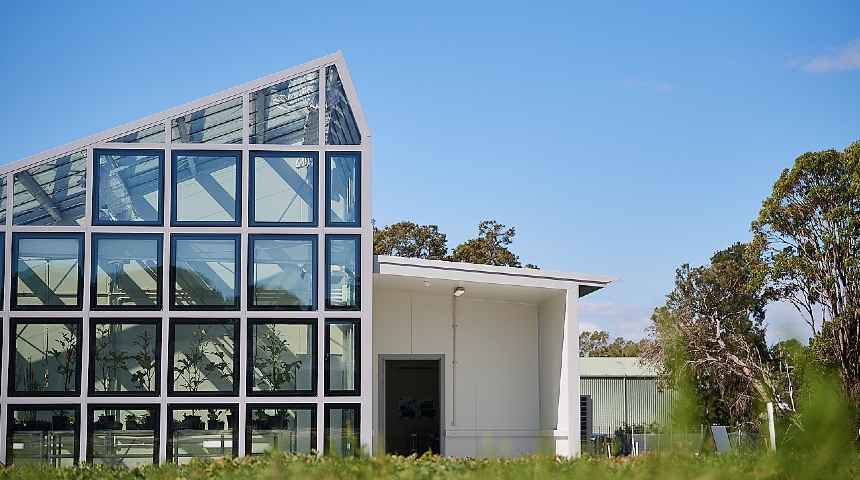The state-of-the-art facility will be used by Murdoch University’s internationally renowned geneticist, Professor Chengdao Li, and his team, with a view to developing new plant breeding technologies and integrating them to produce commercial crop varieties.
Murdoch University Vice Chancellor, Professor Eeva Leinonen said the ClearVue Greenhouse project was a number of years in the making, but represented what universities and industry can achieve when they work together.
“Murdoch’s research strategy is focused on Food, Health and the Environment and the interconnections between each,” Professor Leinonen said.
“We are a research-intensive university with a focus on translational research with real-life impact, tackling some of the world’s most pressing problems – from food and water security and climate change to land degradation and population growth.
“We also have a long and proud history of building successful community, government and industry-based partnerships and I am delighted that ClearVue has become an important new collaborator as we seek answers to wicked global problems – increased food demand, environmental sustainability and food safety.
“The ClearVue project is a fantastic example of technological advancement that plays to Murdoch’s research strengths on environmental, food and health sciences.
“I am delighted that Professor Chengdao-Li and his team will play an ongoing role in conducting plant science in this new greenhouse environment, building on our University’s outstanding record of agricultural research.”
Constructed using a $1.6 million grant from the Australian Federal Government’s AusIndustry Cooperative Research Centre Projects program and completed with the assistance of its project partners Edith Cowan University (ECU) and blanc, the greenhouse utilises clear solar glass that not only lets natural sunlight through but also generates power using the unwanted UV and IR light wavelengths and converts these to power from photovoltaics at the perimeter of the window.
This information is quickly analysed to make automatic adjustments to air conditioning, lighting, fans, louvres, blinds and reticulation systems, which in turn allows scientists to maintain a constant microclimate that provides optimum growing conditions – all while being powered by the energy generated by the ClearVue glass.
ClearVue Technologies Limited Executive Chairman Victor Rosenberg said ClearVue was truly excited to be working with Professor Chengdao-Li and his team at Murdoch to support agricultural research that is intended to improve global environmental, food and health outcomes.
“Estimates indicate the world’s arable land has reduced by one third in the past 40 years,” Mr Rosenberg said. “By 2050, two thirds of the world’s population is predicted to be urbanised, which will further impact the availability of land for agricultural production.”
The ability to control the microclimate within the ClearVue greenhouse creates an optimum growing environment to achieve higher yields. Leafy plants require protection from harmful UV rays in the same way humans need to protect their skin. Plants do this naturally by producing a waxy substance that shields them from harmful UV rays.
ClearVue glass blocks these UV rays, so the energy required by plants to create the protective layer on leafy vegetables can be redirected to growing bigger, tastier, fresher produce which leads to improved yields and quality of produce.
“Murdoch University has announced its intention to become a world leader in the areas of Environment, Food and Health, which aligns perfectly with the vision and values of ClearVue Technologies,” Mr Rosenberg said.
“We create smart building technologies. What that means is our focus is on developing technological solutions that are focused on sustainability, energy efficiency and positive environmental outcomes.”


